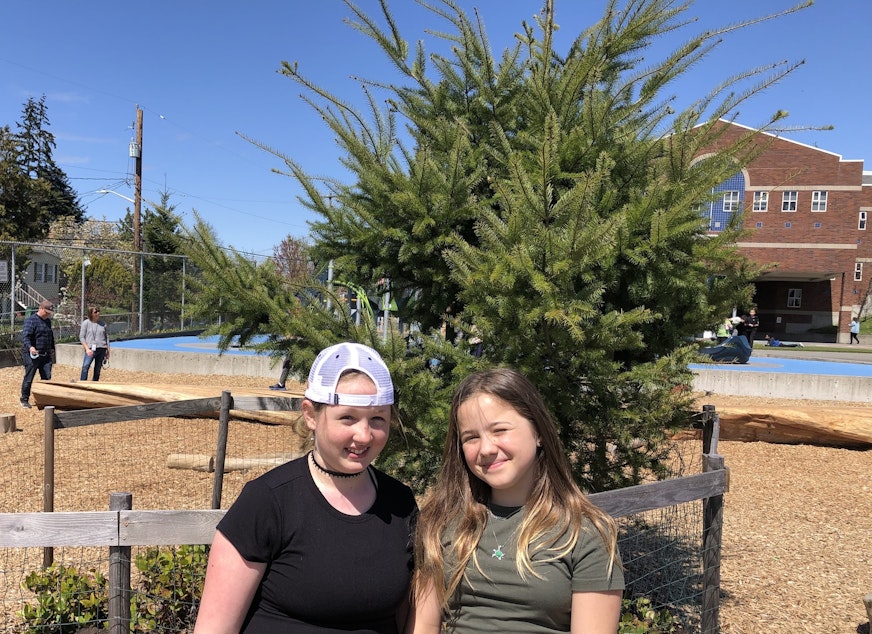These Seattle 4th graders planted trees to bring green to their barren playground

The Seattle City Council is considering updates to its current tree regulations this month. One goal is to bring more trees to areas that lack them. Mayor Harrell’s proposal includes a “fee-in-lieu” program that would require people to pay into a tree-planting fund when they cut down trees on their property.
A recent study found that Seattle is losing tree canopy, and that less affluent neighborhoods had fewer trees to start with. Proximity to trees is associated with better human health outcomes and reduced impact from the record heat waves fueled by climate change.
Replacing pavement with trees can be rewarding but involves a lot of legwork. Hawthorne Elementary in Seattle’s Columbia City neighborhood provides a case study.
Parent Peter Schumacher said a few years ago families started brainstorming improvements to the school’s playground. The playground was outdated and consisted of a big expanse of asphalt that got really hot on sunny days.
“We just started thinking, well, trees are a solution to that, right?” he said.
The group ultimately obtained grants from Seattle’s Department of Neighborhoods, King County, and The Nature Conservancy to replace some of that asphalt with trees, wood chips and a rain garden.
Sponsored
But Schumacher said the process was not easy or cheap.
“If it was just planting the trees, we would have only needed probably about $5,000 to do that," he said. "But the de-paving work and the drainage associated with that was another $35,000.”
Peter’s daughter Anna noted that even when school was out, she and other community members have had to water those baby trees on hot summer days.
“It was not fun then, but now that I see all the plants that have gotten so big and they’re so green, I’m glad that we did," she said.
Fourth grader Josephine Kennedy said now those trees are starting to provide a little shade.
Sponsored
“Sometimes we set up a little hut with walls and seats and then we just sit under the tree to cool off,” she said.
Another fourth grader, Francie Gaggia-Parent, said the renovated playground, which includes stackable blocks of wood, is a hit with students.
“I think it’s especially fun because we have a bunch of wood pieces and it’s easy for kids to pick them up and move them around and put them in any order or place they want,” she said.
City council members are debating how the program to fund new trees would work, and which neighborhoods would be eligible for the funding. On Thursday, members of the council’s Land Use Committee are expected to discuss dozens of amendments to the ordinance introduced by Mayor Bruce Harrell in March.
They’re aiming to pass a new tree ordinance by the end of this month.




